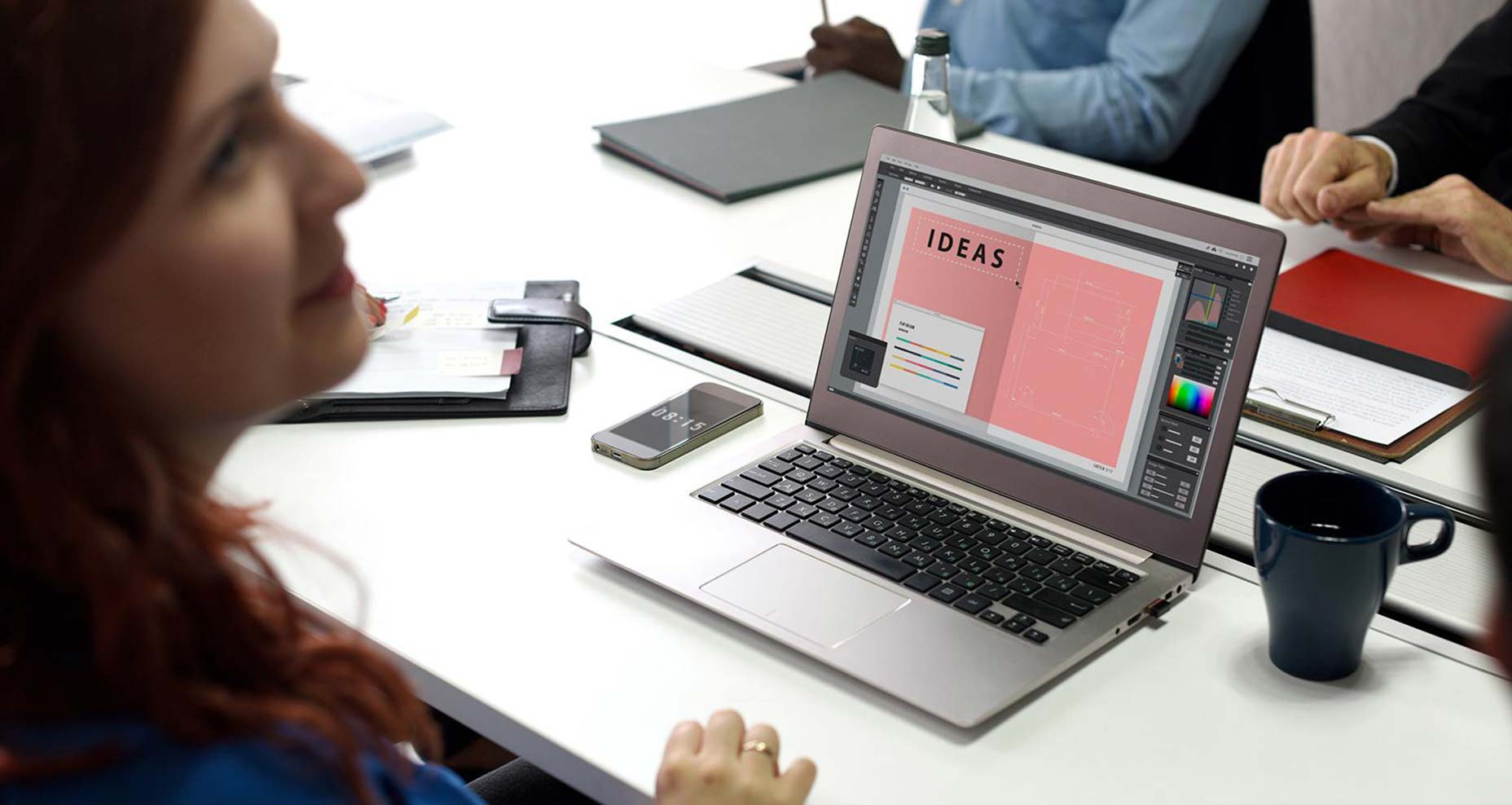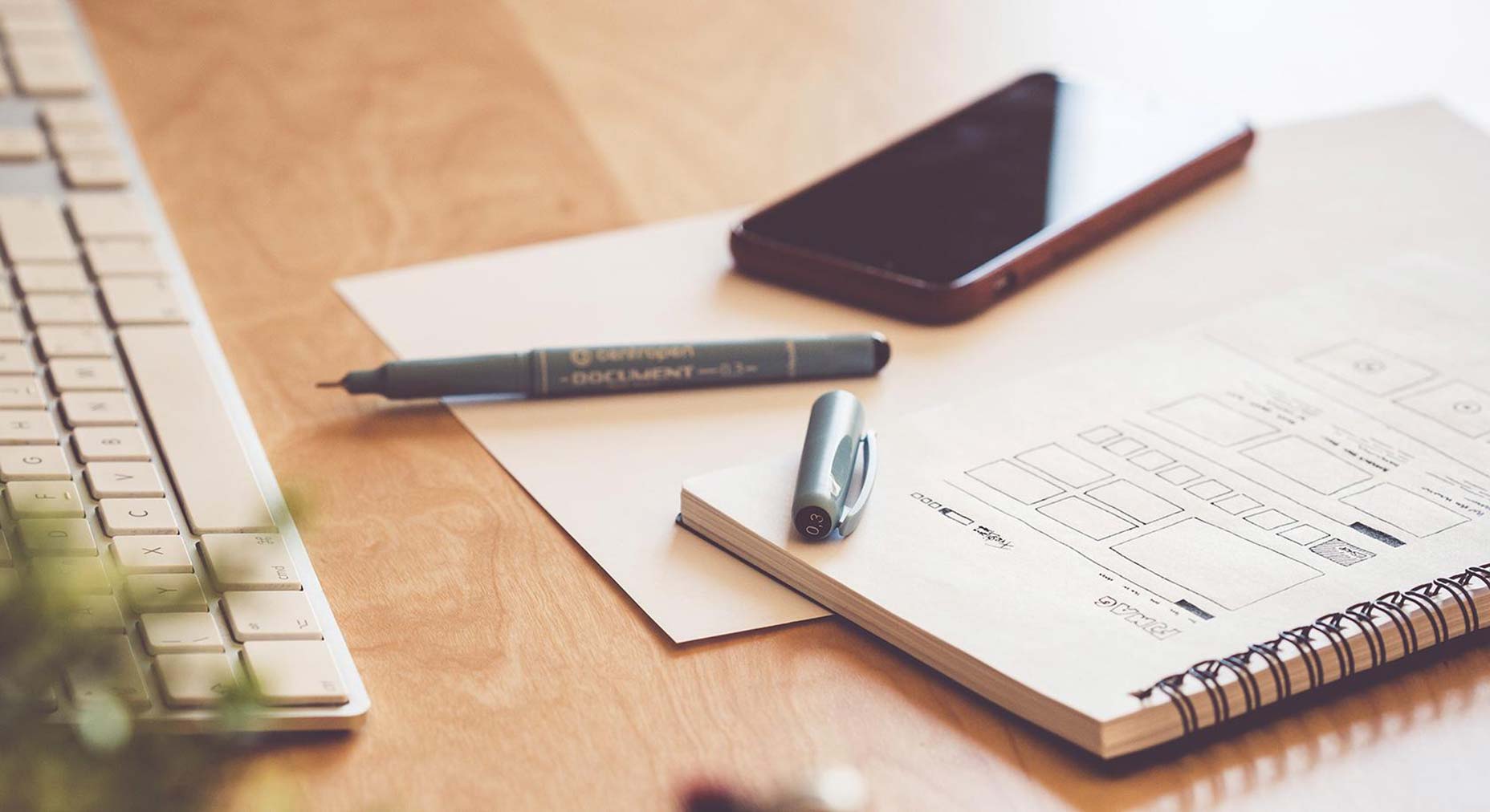Great Questions Lead to Great Design: A Guide to the Design Thinking Process

Great designers help teams and stakeholders make better decisions by using questions to identify opportunities, reveal underlying needs, and understand user context.
James Dyson, having been inspired by a centrifuge used to separate paint particles from the air, came up with the world’s first bagless vacuum cleaner in 1983 after famously going through 5,127 prototypes—the epitome of design thinking. He must have asked a lot of questions along the way… Designers face tough problems every day—problems that require them to find design solutions that deal with business and technical constraints while also addressing user needs. At the same time, the urge to find solutions quickly shouldn’t preclude designers from thoroughly understanding the heart of the problem, as well as the user context, from the outset. The critical “investigative phase” should not be bypassed—it is a vital component in the design-thinking process. It is where carefully formulated questions reveal themselves as a great way to approach a design problem even before designers start “designing.” Questions are a genuine expression of our curiosity and interest in something. They are the means by which people seek meaning in the surrounding world and often trigger our willingness to explore. When designers are faced with a problem, their brain is programmed to find a good enough solution right away and act upon it. However, it is important to note that those willing to deliver successful products and services must face the problems and build a deeper understanding of them in order to come up with valuable insights.
By knowing how questions work and how to use them cleverly, designers can unleash the potential of good questions to build understanding, trigger the imagination, and foster collaboration.
When designers are faced with a problem, their brain is programmed to find a good enough solution right away and act upon it. However, it is important to note that those willing to deliver successful products and services must face the problems and build a deeper understanding of them in order to come up with valuable insights.
By knowing how questions work and how to use them cleverly, designers can unleash the potential of good questions to build understanding, trigger the imagination, and foster collaboration.
Why Designers Don’t Ask Questions
Designers typically operate in fast-moving environments which demand focusing on quick solutions and delivery. In that context, questions like “Why do we need to solve that problem?” or “How did you notice this problem?” which may lead to a better understanding of the underlying causes and needs, are seen as interruptions that slow down the process. While quick wins are OK in some situations, designers also have the responsibility to help teams establish direction and not waste valuable resources working—no matter how fast—on the wrong problems. Designers are like detectives; they need information from many different sources in order to resolve their cases. And what is a key skill that good detectives have? Asking smart questions that help them clarify the case, solve the puzzle and find the truth.
Why Don’t Designers Ask Questions as Often as They Should?
Some designers are afraid of annoying people. When someone presents a new idea or solution to the team, questions that reveal weaknesses or uncovered areas can make owners feel uncomfortable. They thought they had it all figured out, and suddenly, there’s an element of uncertainty introduced into the picture. They realize there is more to think about than they had expected, so they look at the designer as an “annoyance.” Designers should make it clear that they are not there to annoy people or slow down the process unnecessarily but to help the team build better products; consequently, their feedback should be seen as a valuable contribution and a crucial part of a prudent design process. A lot of people think of designers at an execution level—decisions are made by technology, business, and marketing teams while designers are there to simply execute commands. But designers also have the responsibility to expose the value of design at a strategic level. Some designers lack the confidence and training—both to ask good questions and to do it in a way that clearly reveals their will to help and collaborate. As everything in life, asking good questions is a matter of training. The more you do it, the better you get at it. One of the purposes of this article is to provide designers with some ideas that will help them get started in the art of asking good questions.Types of Effective Questions for Designers
A good question is the one that lets you obtain the type, quality, and quantity of information you need. In order to do so, designers have to decide both the type of questions they use and the way they formulate them. Here are some basic but very effective types: Open-ended questions encourage people to reflect and reveal what’s important for them. They allow people to freely expand on what is comfortable for them, rather than justifying their thoughts. Open-ended questions tend to explore possibilities, feelings, and the reasons why. Michael J. Marquardt, author of Leading with questions, describes some types of open-ended questions:- Explorative questions force expansion on new points of view and uncovered areas. Have you thought of…?
- Affective questions reveal people’s feelings about something. How do you feel about…?
- Reflective questions encourage more elaboration. What do you think causes…?
- Probing questions invite a deeper examination. Can you describe how…?
- Analytical questions look for the roots of a problem. What are the causes of…?
- Clarifying questions help align and avoid misunderstandings. So, you mean that..?

The Anatomy of a Good Question
A good question doesn’t depend just on the type of question it is, but also on how you frame it. The form of a question is part of its function. Good questions should be framed under these principles: Good questions should empower. Disempowering questions focus on why the person did not succeed, which puts that person in a defensive mode. Empowering questions are asked from trust—they get people to think and find their own answers, which transfers ownership and develops self-responsibility. For example, when giving feedback, instead of just saying “I don’t think this would work,” you could ask, “What other options have you explored, and why did you choose this one?” Good questions should challenge assumptions. They should help clarify the situation and cause individuals, teams, and organizations to explore the methods, processes, and conventions that drive their actions. Good questions should cause the person to stretch. They should encourage reflection and help people go beyond the obvious. Good questions motivate people to take things to the next level. For example, when discussing with technology teams, instead of asking, “Can you do this?” you could ask, “Supposing this is the way to go, what would you need to have or eliminate in order to accomplish this?” Good questions should encourage breakthrough thinking. Good questions open up new possibilities. They involve people in divergent thought processes that lead to new perspectives. For example, when designing a new login screen, instead of just asking, “How could we make the login process faster?” you could ask, “How could we deliver value to our users without them having to log in?”
The Setup for Good Questions
Even if you choose the right type of question and you frame it correctly, you need to set the stage in order for others to understand why you are asking questions and what for. Designers are not judges—they are facilitators that provide a context for the information to flow as part of the design thinking framework and help everyone make informed decisions. Here is a process that helps accomplish that: Adopt a learner mindset. Our mindset frames how we see the world. A learner is optimistic and seeks understanding as a way to guide their actions. Be curious, attentive, and receptive. You are not a judge, you are a designer who needs to investigate the problem more deeply in order to make decisions, so let people know that. Find the right people to ask. Learn who can help you the most and be sure you can count on them: adapt to their schedule, look for the best moment to get them on board and engage them in your project. Set the stage. Warm up. Provide context and get people to feel comfortable in order for them to be open and ready. Ask your questions. Sometimes, you just want people to express their thoughts on something. Other times, you want to ask specific questions even if you know it will be unpleasant for them. If you really need answers to those, set the stage properly and ask them anyway. Dig deeper. Ask follow-up questions in order to get deeper information and clarify that everyone understands the same thing. Use the power of silence—just keep silent, look people in the eye, and nod—so they can expand on their thoughts and ideas without interruption.How Can Asking Good Questions Build Understanding?
Good questions challenge the status quo, forcing people to pay attention to what’s really going on. They help discover how things work, who’s involved, and how everything relates. Questions help create a clear map of the situation. Find the root of the problem. Some designers focus on symptoms and simply provide solutions for them. Great designers focus on understanding the origin of those symptoms in order to make a good diagnosis. Challenge assumptions. Individuals, teams, and organizations have their own habits and processes. Good questions help detect their biases and find new perspectives and points of view. Understanding context. Designers use different mapping techniques in order to get a clear picture of how the whole system works. They use ethnography and empathy to understand people’s behaviors and mental models. Good questions help gain valuable insights and uncover social, economic, or cultural patterns that take place in a particular context.Questioning Techniques That Build a Deeper Understanding
The 5 Whys
This method helps you get a deeper understanding of the root causes and underlying beliefs and motivations of people. It’s at the heart of a proper design thinking process. Sakichi Toyoda, one of the fathers of the Japanese industrial revolution, developed the technique in the 1930s. Here’s how to apply it:- People don’t buy products in our online store. – Why?
- Because they don’t complete the purchase, they drop off. – Why?
- Because they tend to abandon the shopping cart. – Why?
- Because the cart is where we show shipping details and they think 10 days is too long. – Why?
- Because people buy our product as a gift to someone just a couple of days before the gifting date. 10 days is too long for shipping.
Who, What, Where, When, Why, and How
This is another framework that can be used in order to analyze and get a deeper understanding of the situation and context. Whenever you face a problem, asking these questions will help you get a clear view of the current situation, map critical pain points, and come up with possible ways of taking concrete action that will solve the problem:- Who interferes with the process in the situation? Users, stakeholders, suppliers, clients, team…
- What elements compose the situation? Actions, behaviors, elements, tools…
- Where does it happen? Geographically, culturally, socially, economically…
- When does this occur? Past, present, future, situational context (when I’m in a rush), frequency…
- Why does this happen? Causes, constraints, needs, motivations…
- How is the situation created? Processes, metrics, results…

How Can Designers Trigger the Imagination by Asking Great Questions?
Great questions have the power to transport us to unimagined scenarios and transform the way we see reality. Questions like, “How would this be in 2050?” lead us to a mindset where our current constraints and biases are no longer valid, forcing us to operate under new paradigms. When we reframe a situation with questions like, “What would happen if all humans were blind?” we are challenging the set of beliefs and values that we use when inferring meaning, so our view of the situation can change dramatically. When people see things from new perspectives, innovation happens.Questioning Techniques That Can Trigger the Imagination
There are some question starters that will help you frame your questions in a way that encourages imagination and causes people to develop new perspectives:- What if…?
- How would it be different if…?
- Suppose that…?
- What if we knew…?
- What would change if…?
- What other way could we…?

How Can Designers Foster Collaboration by Asking Great Questions?
Questions are also a good way to help teammates identify critical points in their designs and find stronger arguments for their decisions. Through intelligent and constructive feedback, the whole team can benefit from everyone’s point of view and area of expertise. Instead of asking “Isn’t that interaction a bit awkward?” which could make people defensive, great designers ask questions like, “What were other options you considered, and why did you choose this one?” You’ll help people reflect on their work, explain the reasons why, and see questions as a gift. Questions build respect and show interest in others’ feelings and thoughts. They help align team members, clarify goals, and give people a sense of responsibility and ownership. Questions also improve self-awareness and develop better listening and greater understanding capabilities. When you ask your teammates questions, you learn about how they think, what they believe in, how they feel in certain situations, etc. It helps build solid links with the team.Questioning Techniques That Foster Collaboration
As part of a design thinking exercise, there are some question starters that will help frame questions in a way that builds trust and encourages team collaboration:- How do you feel about…?
- How would you describe…?
- How could we…?
- What help do we need in order to…?
The Design Thinking Process Using Great Questions
Questioning is a powerful tool that every designer should be able to use fluently. As part of a design thinking process, questions can help understand a situation and get valuable insights. They can also foster creativity and innovation within an organization, and can help teams align and unite. Asking questions and letting the information flow is essential for growth as an individual and as an organization. But a questioning culture also requires an atmosphere of trust and responsibility, where everyone’s wisdom and capabilities are respected and promoted. As a designer, ask questions and make sure everyone understands that they come from genuine curiosity and a desire to explore product design more deeply, with the aim of coming up with the best design solution. [-- This article was originally posted on the Toptal blog, republished with permission --]Jorge Juan Perales
Jorge Juan has more than a decade of experience in designing successful products from concept and MVP definition to prototypes and high-fidelity visuals. A creative, detail-oriented, and strategic thinker, he loves to work in fast-moving teams and create products that deliver great value to users while incorporating technical capabilities and business goals.
Read Next
3 Essential Design Trends, November 2024
Touchable texture, distinct grids, and two-column designs are some of the most trending website design elements of…
20 Best New Websites, October 2024
Something we’re seeing more and more of is the ‘customizable’ site. Most often, this means a button to swap between…
Exciting New Tools for Designers, October 2024
We’ve got goodies for designers, developers, SEO-ers, content managers, and those of you who wear multiple hats. And,…
15 Best New Fonts, September 2024
Welcome to our roundup of the best new fonts we’ve found on the web in the previous four weeks. In this month’s edition…
By Simon Sterne
3 Essential Design Trends, October 2024
This article is brought to you by Constantino, a renowned company offering premium and affordable website design
You…
A Beginner’s Guide to Using BlueSky for Business Success
In today’s fast-paced digital world, businesses are always on the lookout for new ways to connect with their audience.…
By Louise North
The Importance of Title Tags: Tips and Tricks to Optimize for SEO
When it comes to on-page SEO, there’s one element that plays a pivotal role in both search engine rankings and user…
By Simon Sterne
20 Best New Websites, September 2024
We have a mixed bag for you with both minimalist and maximalist designs, and single pagers alongside much bigger, but…
Exciting New Tools for Designers, September 2024
This time around we are aiming to simplify life, with some light and fast analytics, an all-in-one productivity…
3 Essential Design Trends, September 2024
September's web design trends have a fun, fall feeling ... and we love it. See what's trending in website design this…
Crafting Personalized Experiences with AI
Picture this: You open Netflix, and it’s like the platform just knows what you’re in the mood for. Or maybe you’re…
By Simon Sterne
15 Best New Fonts, August 2024
Welcome to August’s roundup of the best fonts we’ve found over the last few weeks. 2024’s trend for flowing curves and…
By Ben Moss















